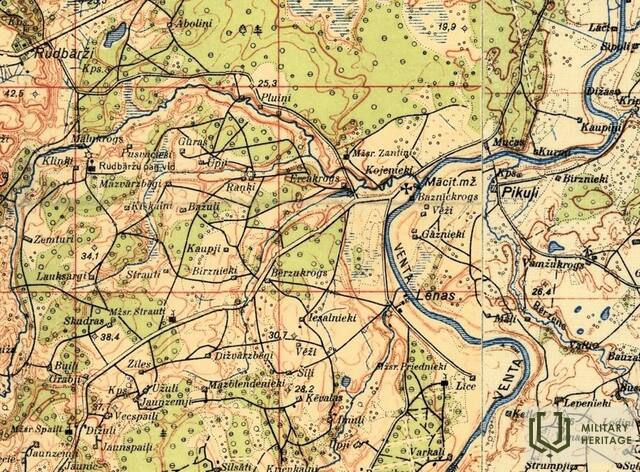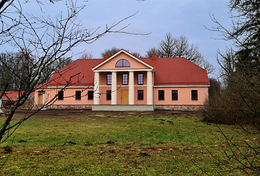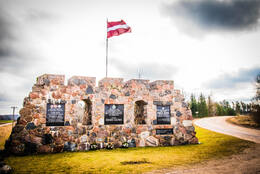1. Crossing of the Latvian Separate Battalion Venta on March 3, 1919
One of the main challenges for the units of the 1st Latvian Separate Battalion was to cross the frozen river Venta and build a road across it.
It came in March, and on March 2, gathering at Lēni manor, the battalion began its attack. The Bolsheviks were disinformed that the battalion would rise across the Venta near Lēni manor, but in reality it crossed the river at Līči half-manor in the direction of Varkaļi house.
My father, Lieutenant General Bloom, was assigned to vacate the front bridge and occupy the New Manor with ten horsemen, thus ensuring the successful relocation of the Kalpaka Battalion to Venta. By the beginning of March, the ice on the banks of the river had already risen and there was a rapid flow of water along both sides. With the help of soldiers and local farmers, the barn of Līči half-manor was demolished and both sides of the river were secured with the obtained timber in order to successfully move cannons and transporters on a safe road. Officer Paulis Blūms received personal praise from Colonel Oskars Kalpaks for performing this task.
The rise over the Venta took place on the early morning of March 3, surprising opponents, and they panicked to leave the front line.
Bloom J. My father.
Related timeline
Related objects
Lēnu Manor
The manor castle is located in the village of Lēnu, by the Venta River. The castle is currently privately owned and can therefore only be seen from a distance.
The manor house was used as a support point by the 1st Latvian Separate Battalion from the end of January to 3 March 1919. The Latvian Separate Battalion had to liberate the surroundings of Leni Manor in order to be able to cross the river opposite Jaunmuiža.
The manor belonged to Baron Friedrich von Firks, who also owned the Rudbāržzi and Sieksate manors. The manor house was built in the 19th century. For the Baron, the castle of Lēnu served mainly as a place for hunting and weekend relaxation.
From 1927 to 1937 the castle was a school, and during the Soviet occupation it was a collective farm woodshop. In 1965, a community centre was opened. The ensemble of buildings has suffered many alterations and the park has not been preserved. Several outbuildings have survived.
Memorial to the 1st Latvian Separate Battalion in Lėnai and relocation site on the Venta
The monument is located in Lēņi, at a road crossroads near Lēņi Manor.
The monument was unveiled on 8 November 2007. It was designed by sculptor Maija Engele. The author and financier of the monument is Jānis Blūms, whose father, Lieutenant Paulis Blūms, 1st Lieutenant of the 1st Separate Latvian Battalion Cavalry Division, organised and led the river crossing on 3 March 1919 with the help of 10 men.
Every year on 3 March, young guards, servicemen and other interested persons gather here for a commemorative event in honour of the 1st Latvian Separate Battalion.







